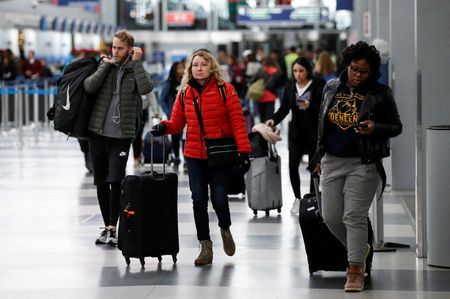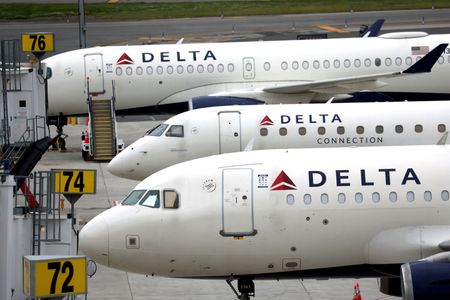By Allison Lampert and Abhijith Ganapavaram
(Reuters) – New York excavation contractor Brian Dietz does not view higher air fares as a deal-breaker for flying and airlines are seeing more small and medium size companies like his feeding a 2023 rebound in business travel.
The joint owner of family-run Bob Dietz & Sons is not thrilled about higher fares but plans to fly for meetings and to a March trade show despite rising costs, economic uncertainty and a recent wave of flight cancellations.
When it comes to evaluating heavy machinery, nothing compares to in-person. “You want to touch it, you want to sit in it, you want to operate it,” Dietz said. “You can’t do that on Zoom.”
Global airlines are expected to return to profitability this year for the first time since 2019, fueled by demand for leisure trips, according to trade group IATA. Also helping is expected demand from financial services companies and small and medium sized enterprises (SMEs) like Dietz’s, according to industry officials and various surveys.
Booking activity by SMEs hit 80% of 2019 levels during the third quarter of 2022, 19 percentage points above multinational corporations, according to American Express Global Business Travel (Amex GBT).
Although business travelers often book economy seats, corporate travel is critical for airlines because it means more frequent flyers and appetite for higher-margin premium fares.
Delta Air Lines recently said it had its highest days for corporate bookings since the start of the pandemic, with corporate domestic sales recovering to 80% of 2019 levels.
SME executives were some of the first business travelers back on planes after the pandemic-induced slump. They have since emerged as the fastest-growing segment within corporate travel according to Amex GBT.
“The recovery by SMEs has far outpaced the recovery by the multinationals,” said Jeremy Quek, a consultant at Amex GBT.
Spending on business travel globally is expected to recover to 80% of 2019 levels in 2023, up from 65% in 2022, according to the Global Business Travel Association (GBTA).
North America is expected to experience the sharpest rebound with compound annual growth increases of 23.4% to $363.7 billion by 2026, the GBTA said.
According to average fares paid by Amex GBT clients on U.S. domestic routes, the cost of first and business class rose by 11% during the second half of 2022 compared with the same period in 2019, while coach prices grew 4%.
Strong demand in recent months, coupled with industry-wide capacity constraints, such as aircraft delivery delays and pilot shortages, have enabled U.S. airlines to hike fares.
Dietz flies premium economy for shorter trips, business class for longer flights, and plans to travel every other month.
He said he is watching to see if the industry can avoid a repeat of this month’s Federal Aviation Administration system outage and last month’s systems meltdown by Southwest Airlines Co, both of which stranded thousands of passengers.
“Our time is valuable,” he said, “so I can’t sit at an airport.”
(Reporting by Allison Lampert in Montreal and Abhijith Ganapavaram in Bangalore, editing by Ben Klayman and Bill Berkrot)


